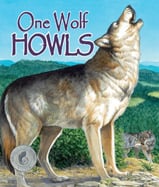Alignment to Standards for GA

| Grade | Number | Standard |
|---|---|---|
| 1 | S1CS2. a | Use whole numbers in ordering, counting, identifying, measuring, and describing things and experiences. |
| 1 | S1CS4. c | Compare very different sizes, weights, ages (baby/adult), and speeds (fast/slow) of both human made and natural things. |
| 1 | S1CS5. a | Describe and compare things in terms of number, shape, texture, size, weight, color, and motion. |
| 1 | S1E1. a | Identify different types of weather and the characteristics of each type. |
| 1 | S1E1. c | Correlate weather data (temperature, precipitation, sky conditions, and weather events) to seasonal changes. |
| 1 | S1E2. b | Identify forms of precipitation such as rain, snow, sleet, and hailstones as either solid (ice) or liquid (water). |
| 1 | S1L1. d. | Compare and describe various animalsãappearance, motion, growth, basic needs. |
| 2 | S2CS2. a. | Use whole numbers in ordering, counting, identifying, measuring, and describing things and experiences. |
| 2 | S2CS4.d. | Compare very different sizes, weights, ages (baby/adult), and speeds (fast/slow) of both human made and natural things. |
| 2 | S2CS5. a. | Describe and compare things in terms of number, shape, texture, size, weight, color, and motion. |
| 2 | S2E3. a. | effects that occur in a specific area caused by weather, plants, animals, and/or people. |
| 2 | S2L1. | Students will investigate the life cycles of different living organisms. |
| 2 | S2L1. b. | Relate seasonal changes to observations of how a tree changes throughout a school year. |
| 4 | S4CS4. c. | Identify patterns of change in thingsãusing records, tables, or graphs of measurements where appropriate. Sunrise/moonrise/tide tables (online teaching activities) |
| 4 | S4E3. | Students will differentiate between the states of water and how they relate to the water cycle and weather. |
| 4 | S4E3. e. | Investigate different forms of precipitation and sky conditions. (rain, snow, sleet, hail, clouds, and fog). |
| 4 | S4E4.d. | Differentiate between weather and climate. |
| 4 | S4L1. c. | Predict how changes in the environment would affect a community (ecosystem) of organisms. |
| 4 | S4L1. d. | effects on a population if some of the plants or animals in the community are scarce or if there are too many. |
| 4 | S4L2. | identify factors that affect the survival or extinction of organisms such as adaptation, variation of behaviors (hibernation), and external features (camouflage and protection). |
| 4 | S4L2. a. | Identify external features of organisms that allow them to survive or reproduce better than organisms that do not have these features (for example: camouflage, use of hibernation, protection, etc.). |
| 4 | S4L2. b. | Identify factors that may have led to the extinction of some organisms. (reasons for threatened/endangered/conservation issues) |
| 5 | S5CS4. c. | Identify patterns of change in thingsãusing records, tables, or graphs of measurements where appropriate. Sunrise/moonrise/tide tables (online teaching activities) |
| 5 | S5L2. | Students will recognize that offspring can resemble parents in inherited traits and learned behaviors. |
| 5 | S5L2. a. | Compare and contrast the characteristics of learned behaviors and of inherited traits. |
| K | SKCS2.a | Use whole numbers for counting, identifying, and describing things and experiences. |
| K | SKCS4.c | Compare very different sizes (large/small), ages (parent/baby), speeds (fast/slow), and weights (heavy/light) of both manmade and natural things. |
| K | SKCS5.A | Describe and compare things in terms of number, shape, texture, size, weight, color, and motion. |
| K | SKE1. | Students will describe time patterns (such as day to night and night to day) and objects (such as sun, moon, stars) in the day and night sky. |
| K | SKL1. b | Group animals according to their observable features such as appearance, size, motion, where it lives, etc. (Example: A green frog has four legs and hops. A rabbit also hops.) |
| K | SKL2. | Students will compare the similarities and differences in groups of organisms. |
| K | SKL2. a | Explain the similarities and differences in animals. (color, size, appearance, etc.) |
| K | SKL2. c | Recognize the similarities and differences between a parent and a baby. |
| K | SKL2. d | Match pictures of animal parents and their offspring explaining your reasoning. (Example: dog/puppy; cat/kitten; cow/calf; duck/ducklings, etc.) |
| K | SSKH3 f. | Day, week, month, year |